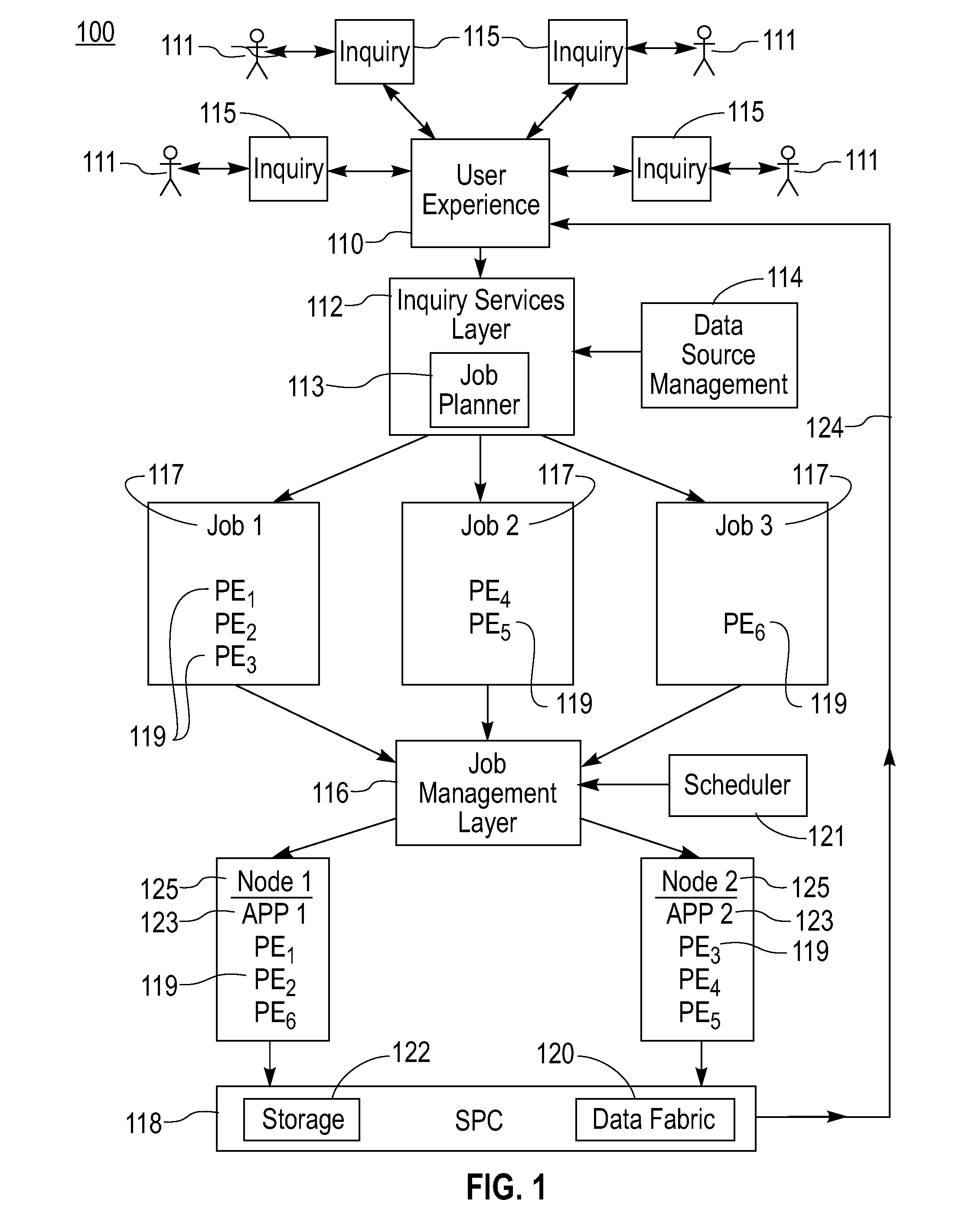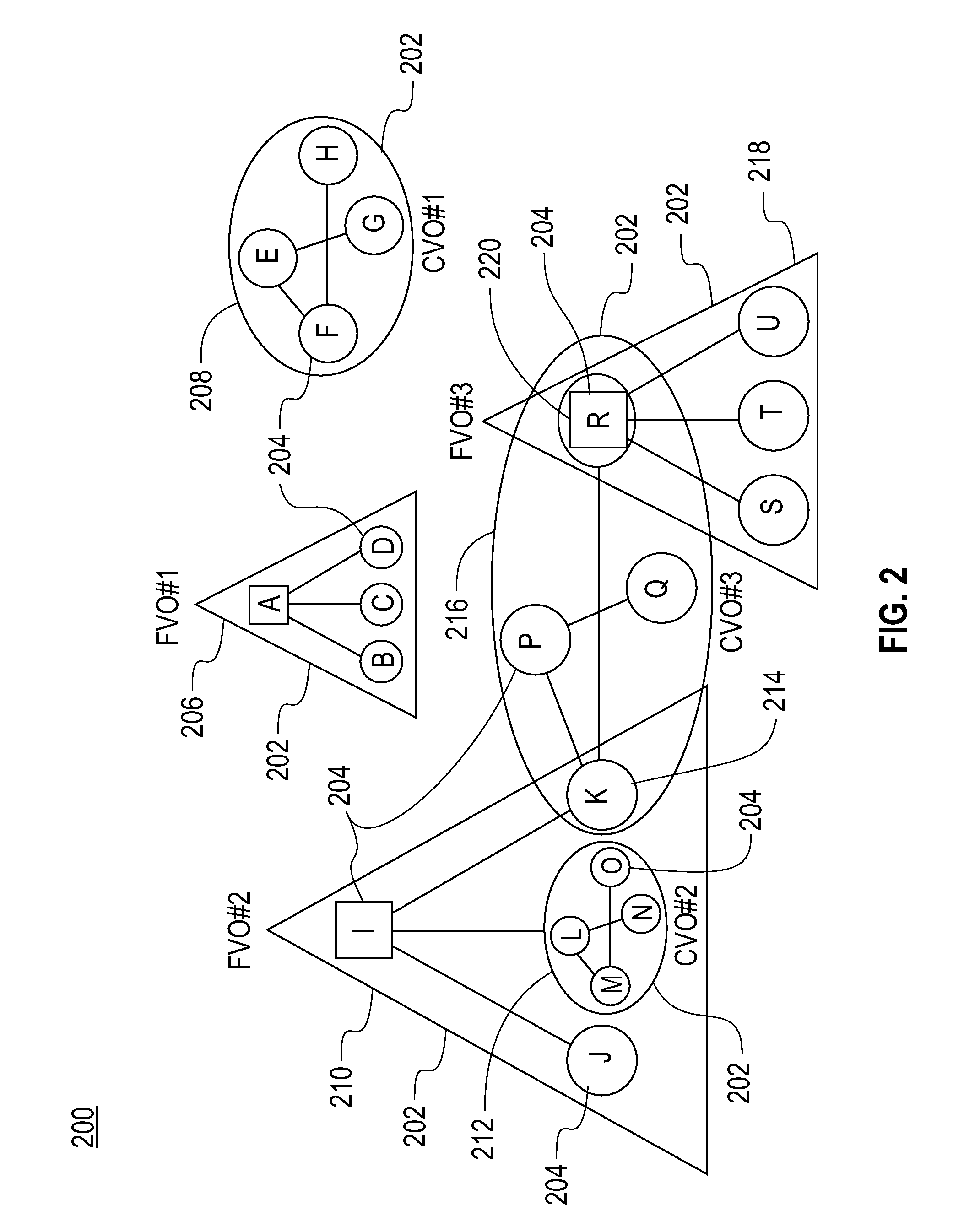System and Method of Planning for Cooperative Information Processing
a cooperative information and planning technology, applied in the field of data analysis, can solve the problem that no one site can force any decision or action, and achieve the effect of facilitating sharing among sites
- Summary
- Abstract
- Description
- Claims
- Application Information
AI Technical Summary
Benefits of technology
Problems solved by technology
Method used
Image
Examples
Embodiment Construction
[0029]Systems and methods in accordance with the present invention provide for the inter-cooperation of multiple, autonomous, distributed stream processing sites. Each individual stream processing site is capable of processing a continuous dynamic flow of information that is created internally at that site or that originates from sources external to that site. Important or relevant information is extracted from a continuous stream containing voluminous amounts of unstructured and mostly irrelevant data. Processing of data streams in accordance with the present invention is utilized in analyzing financial markets, for example predicting stock value based on processing streams of real-world events, supporting responses to natural disasters such as hurricanes and earthquakes, for example based on the movement of rescue vehicles, available supplies or recovery operations and in processing sensor data. Examples of sensor data that can be analyzed include data on volcanic activity as desc...
PUM
 Login to View More
Login to View More Abstract
Description
Claims
Application Information
 Login to View More
Login to View More - R&D
- Intellectual Property
- Life Sciences
- Materials
- Tech Scout
- Unparalleled Data Quality
- Higher Quality Content
- 60% Fewer Hallucinations
Browse by: Latest US Patents, China's latest patents, Technical Efficacy Thesaurus, Application Domain, Technology Topic, Popular Technical Reports.
© 2025 PatSnap. All rights reserved.Legal|Privacy policy|Modern Slavery Act Transparency Statement|Sitemap|About US| Contact US: help@patsnap.com



